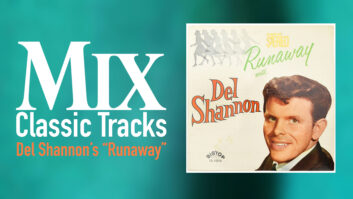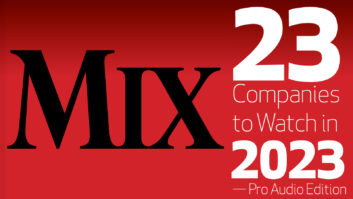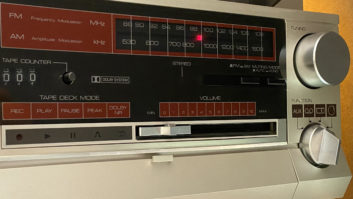
Has it really been three years since Napster appeared on computerscreens worldwide? That can seem like an instant or a lifetime,depending on your view of “Internet time.” Since then,illegal file-sharing music sites have spread through the Net likewildfire, igniting the most significant copyright debate our industryhas seen in decades. There have been lawsuits and countersuits,injunctions and offshore servers, hacks and breakthroughs.
And all the while, consumers continued to swap their MP3s online, ineffect determining how music was delivered through this medium. Themedia focused on illegal file sharing but largely ignored the otherproblem: There were no legitimate choices for those who wanted todownload their favorite songs over the Web.
Reacting to widespread consumer demand for downloadable music,major-label-backed services such as pressplay and MusicNet launchedlast year — albeit without much fanfare. Initially, they offeredlittle to attract customers: limited marketing push, limited content,limited flexibility and limited access — a limited business plan.According to a recent study, less than 1% of the general U.S.population had even heard of these sites, let alone visited them. Itwas a rocky start.
But today, the label and other subscription services offer a widerange of content to compete with the file-sharing sites. Though thisbusiness model is still in its infancy, the services are ready for themass market. A good majority of major-label content has been licensed;there are more options for what users can do with the music that theybuy, whether they want unlimited streaming or a la carte downloads; andpricing plans are in place. All systems go.
$9.95: AN ALBUM OR A MONTH?
In the physical world, music fans walk into a record store and knowexactly what they’re purchasing; whether on vinyl, cassette, CD or DVD,an album is an object — a collection of songs on a physicalmedium — that’s theirs to keep. The same idea holds true in theonline CD retail marketplace: A user can surf on over to Tower.com, Amazon.com, BestBuy.com, find the CDs that they want and proceed to theonline checkout stand. But in the “invisible” universe ofstreaming and downloading, the concept of music as a physical productis undergoing a radical change.
“Consumers already understand how to download music on theInternet,” explains Emusic.com’s general manager Steve Grady.“What we have to do is give them a very good reason to pay forthat as a service. If you think that’s about selling units, then you’reon the wrong track. It’s not about how much you’re making per unit,it’s about how much you’re making.”
Music services are trying to get consumers used to the idea that$9.95 — or any comparable monthly sum — can buy them achunk of time, not a physical product. Most sites today offer unlimitedstreaming and/or “tethered” downloads (those that can onlybe played on the computer to which they were downloaded) or a la carte“portable” downloads, which, for about a dollar a song,consumers are free to copy to their portable devices and burn to CD.It’s still too early to determine which combination of these serviceswill work best, because no single model will work for all music fans:Some will appreciate the “discovery” aspect of unlimiteddownloading, while others will demand portable downloads so that theycan take their music on a morning jog or weekday commute.
Even as this new music-by-the-month notion sinks in, a generation ofWeb-bred consumers is emerging with their own sense of what isvaluable. “The generation that’s there now is still relativelyaccustomed to buying CDs in a physical format,” says Grady.“Those kids who are 10, 11 and 12 years old are growing up in acompletely different world. It’s not that they’re not willing to payfor something, but they don’t associate the same kind of value withsomething that they’re downloading over the Internet as they do a CDthat’s bought in the store. That’s just reality; let’s accept it andbuild something around that.
“What you have to do is get people to pay for some servicearound the music that makes it easier for them to pay for it than it isto steal it,” Grady continues. “That’s the battle: addingvalue to the music, adding value to the whole experience of finding themusic that they want. That’s what people are ultimately going to payfor.”
FORGING A NEW BUSINESS
Subscription options average about $9.95 a month, a marketingdecision based on the idea that a month of access will cost less thanthe price of a single CD. For example, Emusic began with two levels ofservice: $14.99 per month for a three-month subscription, or $9.99 permonth for users willing to make a 12-month commitment. “We have amixture of light, medium and heavy downloaders, and that mix has toultimately be profitable,” says Grady. “There are thingsthat we can do that a peer-to-peer network could never do, such asguarantee the quality of a download. When you download a track from us,you’re downloading it from our servers; you know what it’s going to be,you know what the encoding rate is, you know that all of the trackswere encoded with a quality encoder.
“Just giving you the keys to a big warehouse full of music isnot good enough,” Grady continues. “And that’s what thepeer-to-peer networks do. If you know exactly what you’re looking for,you don’t really have a problem. A lot of what we’re offering is adiscovery service: a way for people to find new music that matchestheir interests at a low cost.”
Some services position themselves as offering everything foreverybody, from the casual shopper who might buy a handful of CDs ayear to a new-music junkie who is scouting out the latest unknowns andobscure acts. pressplay currently boasts 250,000 songs from the BigFive and 100 indies. “It’s for the power user to thenovice,” says Seth Oster, pressplay’s VP of corporatecommunications and public affairs. “All of the music’s in there,it’s extremely easy to use, it’s extremely easy to find, it’s extremelyeasy to stream, download and burn.” Added values include sixdecades’ worth of Billboard chart data and prereleases ofexclusive tracks. “Right now, we’re offering four songsexclusively from Celine Dion’s new album,” says Oster. “Youcannot get them in stores right now, you cannot hear them on the radio,you can only go to pressplay.” Other features include permanentdownloads for less than $1 and unlimited streaming for $9.95 amonth.
As sites have developed during the past year, it has become obviousthat the quantity of content is of prime importance. Why wouldconsumers visit six different sites to get six different tracks whenthey could conveniently go to one site and get everything that theywanted? Possessing licensing deals with the major labels and indies hasbecome an important selling point to attract consumers away from thefree file-trading sites.
Listen.com’s Rhapsody was the first online subscription service tohost titles from the Big Five. It offers a variety of subscriptionoptions (including a seven-day free trial), with added features such asCD burning and Internet radio access. And to make the experience moreuser-friendly for paying consumers, sites are partnering up with othercompanies, i.e., hosting various players. RealNetworks recentlyinvested in Rhapsody, offering its technology to bring the subscriptionbeyond a user’s PC. This strategy follows a year-long activity forListen.com: partnering with consumer electronics companies to bringRhapsody into consumer’s homes, such as connecting a PC to a user’shome-theater system. The key is convenience: Consumers want the abilityto find music easily, go mobile with their music easily and payeasily.
MusicNet is unique among the services in that it is based on abusiness-to-business model, providing custom content and programmingfor its distributors via a software developer’s kit; meaning, a sitemay “feature MusicNet,” but MusicNet.com is not adestination for music shoppers. “We’re responsible for acquiringcontent from the labels — the five majors — as well as keyindependents,” explains MusicNet’s general manager/executive VPEllie Hirschhorn, “protecting it in DRM [digital rightsmanagement]; programming our service, not only making tracks availablebut also providing editorial; reporting back on the usage to our labelpartners, as well as our distribution partners — all thisnon-consumer-interface enablement of the business.”
In what may be the biggest mass-market test of music services sofar, MusicNet recently partnered with America Online. AOL’s 27 millionmembers are now offered “MusicNet on AOL” as a tier ofservice integrated into their AOL accounts. “That takes a deeplevel of customization, which our software developer kit approachallows us to take,” says Hirschhorn. “We also areintegrating into the trusted and familiar AOL customer service andbilling.” This way, MusicNet is built right into a monthly ISPstatement, making payment for the service a relatively transparent(read: easy) experience.
MusicNet also works with individual labels to provide custom artistpromotions for its partners. “Much of the content released bylabels is proprietary but nonexclusive,” says Hirschhorn.“So they give first looks, first listens, content that comes outbefore radio, or tracks that didn’t make it onto an album. It’s notalways exclusive, but how we promote it may be very different than howother people do it. So, if AOL Music, for example, is doing an‘Artist of the Month’ with Faith Hill, we may be able toextend the ‘Artist of the Month’ to an additional window oftime [i.e., extending the promotion for an additional month] or we maybe able to get related content that isn’t available to otherdistribution partners.”
While many Internet companies are drawing from record-labelmarketing and promotions expertise to design a profitable and legaldigital downloading business, one company has strayed from this line ofthought. Last January, Echo was formed through a consortium ofmass-market music retailers (including Best Buy, Hasting Entertainment,Tower Records, Trans World Entertainment, Virgin Entertainment andWherehouse Music) and Echo Networks, a defunct site where users oncestreamed music files with other users. Unlike most other services (yetsimilar to the MusicNet model), there is no Echo.com: The individualretailers’ Websites will each host their own download service.
According to the founder of Echo Networks and current CEO of Echo,Dan Hart, the agreement allows the retailers to set their own prices,while Echo’s mission is to license the best possible wholesale pricesfrom the labels. Hart approached retailers because their marketingcapabilities and long-standing relationships with consumers and labelswould provide a solid base to enter the market. “The concept isreally simple: to try to finally make a legal digital music market workfor the mass consumer. For these companies, 10,000 subscribers and100,000 downloads is not interesting. What is interesting is tens ofmillions of subscribers and billions of downloads: truly a mass-marketphenomenon.”
According to Hart, retailers make approximately 800 million paid CDtransactions a year. That translates into 800 million opportunities fora cashier to tell someone about the digital music service and put astarter kit into a checkout bag. “If you’ve got a millionsubscribers, hypothetically paying in the $5 to $15-a-month range,you’ve got anywhere between a $60 million and $180 million annualbusiness,” Hart says.
While Hart sees the dollar signs, he cautions that there are stillhurdles to overcome, mainly with content. “Even in the case whenyou license from all of the labels, you have individual song publisherswho haven’t cleared their songs. There are still ways in which [themajor labels] can go further to embrace the consumer to a greaterdegree. Maybe the timeline is going to happen faster than they wouldideally like, but I think they see it coming. It’s a choice of donothing online and let free file swapping destroy your business, orembrace online and save your business. It’s an obviouschoice.”
GETTING THE WORD OUT
In the online world of music services, the subscriber is king. Whilethere are plenty of opportunities to pull in secondary sources ofrevenue — from paid song placement and ad sponsorships toaudio-hosting services — most services are banking onsubscriptions to pull in the real money. To do that, they need to reacha larger public. Some services say that the best indicator that peopleare willing to pay for music is the high number of upgrades from freetrial to paid service. pressplay, for example, cites a 60% conversionrate. “We’ve been fortunate that the press coverage of this spacehas been extremely high, and then word-of-mouth adds some value,”says Oster. “We will be doing marketing this year, not onlyonline but offline, and that includes various forms of media indifferent parts of the country. It’s a revolution of sorts takingplace, where the music industry is recognizing that they have to findnew ways of marketing themselves and selling their product.”
Listen.com partnered with Lycos Music to offer a “Free AccessWeek” in February 2003, allowing consumers to test-drive theservice. Customers received a 50% discount off of their first threemonths of service. According to Katie Rae, VP of product marketing forTerra Lycos, which powers the Rhapsody service, “The number ofsubscribers who have signed up for Lycos Rhapsody has far exceeded ourexpectations in their willingness to pay for high-quality, value-addedservices. This promotion makes it even more convenient — and moreaffordable — for our users to try.” Listen.com alsorecently dropped its 1-track download cost to $0.49 from $0.99 tocompete with other services and to draw in more new users. DaveWilliams, VP of product management for Listen.com, says, “Morethan 75% of people who try Rhapsody become subscribers, so we know thatour users are satisfied with the service. Offering $0.49 CD burninglets us reward existing subscribers and provides a great incentive fornew people to try Rhapsody.”
The response to MusicNet’s AOL partnership (with 27 millionpotential subscribers) could prove to be the strongest indicator ofconsumer readiness to join a music service at the terms offered.“Broadly speaking, we believe that the launch on AOL for MusicNetwas a huge milestone for us because we got in front of a mass audiencewith a powerful brand and marketing apparatus attached to it,”says Hirschhorn. “It’s the first milestone for the industry:getting in front of a big audience and seeing who’s going to pay forthis. We’re very encouraged by the AOL launch so far: All of thosenumbers have been skyrocketing, and we really will be able to getconcrete data and usage and mapping out of pricing and conversion. Butso far, not speaking just for MusicNet but for the whole industry, it’sreally hard to speak with a great degree of certainty because there’ssuch a limited sampling and time period over which toanalyze.”
Of course, the AOL/MusicNet deal is still in its beginning stage,but MusicNet is already setting its sights even higher to expand itsdistribution base: “We started with AOL and Real [Networks]; weplan on expanding to a variety of other distribution partners thatmight be outside of the ISP space; in retail, OEM agreements such aswith PC manufacturers, cable broadband, media companies and thelike.”
NOW, OR IN FIVE YEARS?
What will it take for music sites to succeed in such unchartedterritory? In the future, will there be some monolithic, “getallyourmusichere.com” one-stop shop for the entire online musiccommunity? Or, will many sites thrive in a competitive marketplace thatoffers a variety of services for discriminating music fans? Willlong-term anti-piracy campaigns ever make a big enough dent in thepeer-to-peer file-swapping traffic? It’s anyone’s guess at this point.But most agree that someone will be cashing in. pressplay’s Oster says,“It’s very early on, and once we start marketing, there’ll be amuch better sense of where our customers are. But we know they’re outthere, and they’re out there in a very large number.”
Emusic’s Grady muses that this isn’t the first time that an existingmodel’s been challenged by new business, “and most of the time,the result is a new revenue stream; in many cases, it’s bigger than theold revenue stream. I think that if you’re optimistic and you believefor the most part that customers are willing to pay for things thatoffer them value, then there’s a lot of money to be made out there bysomebody. So we hope it’s us, but I think it’s not going to be just us.I think that there’s going to be a lot of people that make a lot ofmoney in this area, and consumers are ultimately going to benefitgreatly.”
The Sarahs are Mix editors.
MP3.COM: The Musician’s Network
As more and more sites join the party, MP3.com continues to do whatit has done during the past five years: provide a place for independentartists to set up shop and promote their music. That is where MP3.comdiffers from the other services: Its business model is built around theartists — 10,000 of them active subscribers — with avariety of services to help musicians get their music out without thecosts and hassles in dealing with a major label.
“By the nature of our domain name — our Web address— and all of the content features that we have, we get a lot oftraffic, about 20 million visitors a month,” says MP3.com’s VP ofmarketing Mike Matey, who recognizes that value to potentialadvertisers. “We can target females or teenagers or males over 35years old; if you want to slice-and-dice the database, we can do that.And there’s the e-commerce services, such as selling CDs and artistsubscription programs. Our sister site is Emusic [both sites are ownedby media conglomerate Vivendi Universal], so we send a lot of customersover there to become subscribers.”
MP3.com has always operated under the philosophy that it isimportant to have multiple revenue streams by “not tying yourcart to one business model,” says Matey. “We’ve always soldadvertising on our site, we’ve always had e-commerce. We’ve focused alittle more on the e-commerce side because the ad market’s been toughlately. But for the most part, that is still a healthy part of ourbusiness.
“We know what our active artist base is, we know how many havealready subscribed, we know what brings people into the program,”he continues. “We just continue to target the top tier ofprospects through our e-mail newsletters, through advertising andthrough the artist admin area. There’s a couple hundred thousand thatwe’re marketing to — to convince them that they need to upgrade.And that is a focus of our marketing efforts, obviously, to increasethat subscription base. But we still care about free artists becausethey provide a lot of value to our Website. They put content up, theytell their friends to check it out, they increase our audiencesize.”
The site is also building its subscription base by hostingCD-listening parties and recently launched an Internet radio serviceand an instant-messaging service.
— Sarah Jones and Sarah Benzuly
Learn more about the majorplayers in the online music subscription world







